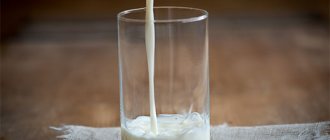Nature has it in such a way that mucus in a person’s lungs is constantly produced. It is necessary for the body to cleanse the respiratory tract of germs and inhaled dust particles. But if inflammatory processes occur in the body, then the amount of mucus secreted increases sharply. As a result, it can stagnate in the lungs, provoking the addition of a bacterial infection. You can alleviate the condition and cleanse the lungs with both medicines and traditional medicine. Therefore, in today's article we will talk about what foods can help clear mucus from the lungs .
What is mucus for?
The reason for the formation of mucus in the body is that upon any contact with the external environment, the body secretes a viscous liquid - this is its protective reaction. The composition of mucus includes 95% water, 3% protein, antibodies and antiseptics, 1% salt, etc.
Mucus performs the function of protection and lubrication in hollow organs - lungs, gastrointestinal tract, genitals and bladder, and is found in body fluids (saliva, joint fluid, urine, bile, etc.).
Mucus in the body ensures the elasticity and strength of tendons and ligaments, and is involved in mood changes, hormonal and metabolic processes. It has a softening property, supports the internal intestinal microflora, and stimulates the immune system.
In some pathological conditions and disorders, the production and quality of mucus may change for the worse, and the mucus changes from beneficial to harmful. This liquid is a type of slag. It thickens and begins to be deposited on the shells and accumulates. It contains waste, toxins, and decay products, and it is difficult to remove it from the body. Metabolic processes with such mucus are disrupted, and microbes can develop in it. Most often it accumulates in the gastrointestinal tract, bronchi, nasopharynx and joints.
This disorder can appear due to exhaustion of the body, eating disorders - excessive consumption of fried, fatty foods, due to smoking and inflammatory processes.
Excess mucus in the body is a favorable environment for microbes, and it is not removed with the help of diuretics and laxatives. Diet and herbal medicine are more effective. Removing mucus takes a long time, but it is useful for healing the body.
How not to swim
In general, excess mucus is bad. Unhealthy mucus quality is also bad. How can we make it good? This requires an integrated approach.
• First, sell the apartment and buy an environmentally friendly uninhabited island in the middle of the Pacific Ocean. Joke. Not everyone has the desire and, most importantly, the opportunity to move away from industrial zones and live in the open air. But at least try to be in nature more often, breathe not gasoline exhaust, but the air of pine forests, and have fun not only in cafes and clubs, but also at picnics.
Functions of slime
So, mucus in the body:
- moisturizes, softens, lubricates;
- participates in maintaining the internal environment of the body;
- protects mucous membranes from aggressive and mechanical effects of external factors.
Filtering function - mucus becomes the first barrier to any pathogenic agents. It simply does not allow them to penetrate further into the nasal passages, pharynx, lungs and genital tract.
The body produces an increased amount of mucus to trap pathogenic agents and remove them from the body's systems. These can be toxic substances in food, dust, animal hair, dander, food allergens, bacteria, viruses. With the help of cilia of the mucous epithelium, mucus removes everything that is not digested and is foreign. Maintaining immunity is explained by the fact that mucus contains antibodies.
Why does the color change?
In its normal state, mucus has a transparent appearance.
But with ARVI, it can acquire a yellow or white tint, especially when the body is dehydrated. The appearance of a green tint may be a signal that the body has a large number of white blood cells associated with infections. But, according to experts, the appearance of color in itself is not an indicator of the presence of a bacterial infection.
When a person gets an infection, the fluid becomes thicker, depending on the type of virus or irritant that activates the tissue.
First encounter with slime
It is formed for the first time in infants when they are introduced to complementary foods. As it grows and develops, it is produced more and accumulates very gradually, more in the lungs, bronchi and mucus in the stomach. When there is an excess of it, it begins to rise up and be released through the nose. Then clear discharge from the nose appears, and there may be a cough - the body is trying to get rid of excess plaque.
So if clear mucus flows from the nose, this is not always a sign of ARVI, it is often an attempt by the body to remove harmful mucus. Some mothers mistake such discharge for a cold and begin to stuff their child with pills. If the child's general condition does not change, there is no reason to worry. The same applies to feces with mucus in a baby - this is not necessarily a sign of an intestinal infection.
The body should be cleansed of mucin regularly, at least once every six months. If left untreated, mucus causes disease. Among them are asthma, allergies, diseases of the ENT organs, viral infections, fibrosis, cysts, COPD.
Healthy mucus is clear and odorless. With pathologies, it becomes cloudy and contains waste and toxins.
Signs of harmful mucus include: susceptibility to frequent colds, fatigue, drowsiness, bags under the eyes, etc.
A good help in the body's fight against harmful mucus is the transition to a raw food diet, then the detoxification process begins in the body. It can manifest itself in headaches, nausea and vomiting, and diarrhea.
In infants, feces with mucus can normally be observed in the first 2 months of life, when the load on the intestines increases. If the child's condition does not worsen, there is no cause for concern: mucus helps digest food.
The causes of stool with mucus in adults are not only mucus-forming products, but also problems with the gastrointestinal tract, bloating and constipation.
Causes of harmful mucus
Mucus can indicate disorders in the body in the following cases:
- Improper nutrition - it includes the consumption of mucus-forming foods, overeating, insufficient chewing, consumption of sweets, flour, and fatty foods. When you overeat, excess food is converted into fat, which creates an acidic environment in the body and promotes the production of mucus. Overeating occurs easily because most often the body's need for food is less than what is eaten. Insufficient chewing is also the cause of stool with mucus in an adult. Food in large pieces does not come into complete contact with saliva. Undigested pieces pass into the intestines and also lead to increased mucin production in the large intestine. Diarrhea with mucus, colitis, constipation, etc. may occur.
- Inflammation in the respiratory organs.
- Impaired metabolism.
- Smoking leads to burns of the mucous membrane and cilia; mucus accumulates in the epithelium. When accumulated, it causes a cough, the body tries to push it out of the bronchi.
Fruits eaten for dessert
The fruits themselves are very healthy, no one dares to deny this. But, when eaten after the main meal, they provoke the processes of fermentation and putrefaction in the intestines. If such “unrest” becomes a common occurrence in the gastrointestinal tract, you should soon expect signals about dysfunction of the digestive system. There may also be surprises in the form of skin problems. What to do? Follow the fruit intake rule. Firstly, only in the first half of the day! Secondly, 30 minutes before meals (sour ones - 15-20). Thirdly, do not combine them with other foods except fruits, fresh herbs and dark chocolate. As an exception, banana can be eaten with dried fruits and nuts.
Symptoms of excess mucus
The following symptoms indicate excess mucus:
The main manifestation of the presence of excess mucus in the body is a constant feeling of fatigue. Conversely, dry mouth will indicate a lack of mucus in the body.
Diagnostics
In addition to conducting an examination and clarifying complaints, the specialist clarifies the quality and diet of the patient. Then he needs to give a stool sample to identify pathogenic microflora. Having established which specific pathogen caused the development of the disease, it will be easier for the doctor to navigate. This is also necessary for prescribing the correct treatment (especially antibiotic therapy).
The mucus present in the stool is also studied in the laboratory.
A blood test (clinical and biochemical) will reveal an increased number of leukocytes, which indicates the presence of a progressive inflammatory process. When mucus is observed in the stool simultaneously with red streaks and there is a suspicion of internal bleeding, an occult blood test will help identify the focus. To do this, the patient submits a small portion of stool: the laboratory assistant confirms or denies the presence of red blood cells.
Considering the preliminary diagnosis, the patient is given additional diagnostic options such as FGDS and ultrasound. If necessary, an x-ray examination using a barium mixture. If mucus in the stool is associated with the presence of hemorrhoids, polyps or other rectal neoplasms, rectoscopy will be required.
What happens when there is excess mucus
The body, like a smart machine, tries to remove such mucus by any means. This occurs through sweat, cough, snot, diarrhea, lacrimation, and fever.
Theoretically, it is better not to eat during this time so that the body can cleanse itself. But a person begins to show initiative, does enemas, drinks cold medicine, drinks medicinal meat broths, suppressing the entire cleansing process.
The body has to deal with drug intoxication. The mucus thickens, the gastrointestinal tract begins to work sluggishly, and the excretory organs become clogged with mucus even more.
The cause of mucus in the urine in women can also be prolonged retention of urine, and not just lack of hygiene, infection, etc. This means that to find out the reasons, you need to consult a doctor, because there are many reasons and it is very difficult to identify one of them on your own.
Cow's milk products
Much can be written about the unhealthy effects of cow “derivatives”. In short, the chemical composition of cow's milk is by no means as suitable for humans as has been successfully assured for many years. What to do? Switch to goat or sheep milk products. You may be put off by the specific taste and smell at first. But in the long run you will be healthier - “milk” from small horned animals acidifies the body several times less and is better absorbed. And you quickly get used to the goat/sheep specificity of the product.
Consequences of harmful mucus
Why is mucus in the body dangerous? It leads to weight gain. Compacted mucus is deposited on the intestinal walls in the form of 10-15 extra kg. Such rubble is a real breeding ground for bacteria.
Other health problems:
Various infections of the ENT organs cause mucus in the throat; treatment, in addition to antibacterial treatment, consists in its mandatory removal, too. Excess mucus in the intestines makes it difficult to absorb nutrients, but 80% of the entire absorption process occurs in the small intestine. This leads to tissue hypoxia and brain function is disrupted. Reactions become inhibited, absent-mindedness appears.
Milk chocolate
Unhealthy sweetness that makes your butt grow and makes you want to consume even more sugar-containing products. What to do? Buy only dark dark chocolate. No yoghurt or tiramisu fillings. The cocoa content in the bar must be at least 68%. Due to the high percentage of cocoa products, this chocolate is quite filling. You are unlikely to finish the entire tile. But you can eat a lot of dairy and not even notice it.
| Categories: | HEALTH/DIETS |
Tags:
health
Cited 3 times Liked by: 2 users
General body cleansing
Any recovery begins with proper nutrition. It is advisable to change the way you prepare dishes, eat more fresh vegetables and fruits. Once a week, it is advisable not to eat during the day, i.e. drink only lemon water. This is an effective method of clearing mucus from the stomach. The way out of hunger should be with the inclusion of juices and fruits that dissolve mucus.
You should know that boiled food leads to the formation of mucus, which is why it is important to consume foods without heat treatment in larger quantities. For the same reason, it is harmful to eat before bed. Short-term fasting is carried out with increasing time:
The amount of water should be consumed at least 2-3 liters.
Perhaps the most effective cleansing method is using ginger root. It is infused in boiling water and taken throughout the day with honey and lemon. The next helper is black peppercorns. 5 g of it is eaten before dinner and washed down with a glass of water. The course of such cleaning is 3 days with a 3-day break for 3 weeks. Then a break for 3 months. For problems with the gastrointestinal tract, pepper is not used.
Wheat flour products
White flour is evil. It contains no fiber as such, and few vitamins... It is also worth not losing sight of the fact that the agricultural industry is moving forward with great strides. There are more and more people on the planet, and less and less food. A hundred or two hundred years ago, it was possible to find a lot of useful properties in wheat, and the lack of industrial processing had an effect - people ate bread, and it did nothing for them. Today, farmers have at their disposal miracle wheat, which produces phenomenal yields. Alas, because of this phenomenality, the nutritional composition of the grain has become somewhat poorer. In addition, the modern consumer is forced to eat flour without knowing it. Let's take, for example, such a seemingly healthy product as churchkhela. It would seem that nuts and fruit juice are nothing criminal. However, white flour is often used to thicken this juice (this is faster and more effective). What to do? Leave the loaves and rolls to those who strive for obesity. Eat whole grain bread. Carefully study the composition of the product, read the labels, look for “unexpected” ingredients. Before eating flour foods, pre-load a portion of vegetables into your stomach. And always with fresh herbs - they contain enzymes!
Cleansing the digestive tract
They say about gastrointestinal pollution:
To cleanse the body of mucus, use:
Tinctures and teas are brewed from them and taken for a month. The detoxification program begins with cleansing the gastrointestinal tract. An enema is used to cleanse the colon, but it can only clean out part of the lower intestine.
As an enema agent, take lightly salted boiled water or chamomile infusion. The enema temperature is not higher than 36.6 °C - average body temperature.
Some people prefer to cleanse themselves by taking a laxative. The most effective is the use of Fortrans. Dinner will be cancelled.
Taking flaxseed or buckwheat flour with kefir is considered more effective. If you use it 1-2 tbsp. l. in the morning instead of breakfast for 2-3 weeks, the body will cleanse itself, which promotes weight loss. This flour can absorb and remove toxins from the body and reduce cholesterol in the blood.
Buckwheat flour lowers blood pressure, relieves symptoms of atherosclerosis, and relieves constipation. When mixed with ginger and honey, it removes hyperglycemia, cleanses blood vessels, and improves the functioning of the pancreas.
For stomach mucus, you can take horseradish with lemon, wheat germ - 1-2 tbsp in the morning. l. Among the laxatives allowed are “Guttalax”, “Lactulose”, “Bisacodyl”, etc.
Cleansing the nasopharynx
Once the exact cause of mucus in the throat is identified, treatment can also be carried out using folk remedies. The nasopharynx is cleaned by rinsing with infusions or decoctions of herbs.
For this, take 2 parts each: eucalyptus leaves, linden flowers, chamomile inflorescences and 1 part flax seeds. 1 tbsp. l. This collection is infused in a glass of boiling water for 30–40 minutes. Rinsing should be done 5-6 times a day for 2 weeks.
Herbal medicine is the answer to the question of how to get rid of mucus in the nasopharynx. Propolis, crushed into powder, is safe and effective; it is infused in a glass of cold water until it precipitates. This sediment is poured with alcohol in a ratio of 1:3 and left for a week. Used as a throat lubricant.
Ragnar Berg's table (with abbreviations)
Food of animal origin
| Name | Binds mucus and acids (percentage) | Produces mucus and acids (percentage) |
| Beef | – | 38,1 |
| Veal | – | 22,9 |
| Mutton | – | 20,3 |
| Pork | – | 12,4 |
| Smoked pork ham (hot smoked) | – | 6,95 |
| Bacon | – | 9,9 |
| Rabbit meat | – | 22,3 |
| Chicken, hen, goose | – | 24,3; 29,9; 30,7 |
| Offal (tongue, kidneys, liver, heart, brain, stomachs, testes, scallops) | – | 10,6-32,4 |
| Chicken eggs (yolk) | – | 51,8 |
| Goose eggs (yolk) | – | 59,6 |
| Pork lard | – | 4,33 |
| Goat's milk, cow's milk (with cream) | – | 0,65; 3,27 |
| Goat's milk, cow's milk (without cream) | – | 2,39; 4,89 |
| Cheese | – | 11,2-24,3 |
| Butter | – | 4,33 |
| Ghee | 5,6 | – |
Cleansing the lungs and bronchi from mucus
This procedure will be more beneficial for smokers, asthmatics, and those diagnosed with COPD. In addition to folk remedies, such patients are prescribed bronchodilators and mucolytics to thin the sputum.
Among them are “Mukaltin”, licorice root, “Ambroxol”, “ACC”, “Lazolvan”, “Tussin”, “Thermopsis”, etc. Expectorants dilute mucus, increase its secretion and help cough it up.
From traditional medicine recipes we can recommend:
- Oat decoction with milk - combination 1:2. Cook over low heat until half the volume has evaporated. The prepared mixture is taken 3 times a day before meals. The recipe yields a single volume. It must be re-cooked before each use.
- Pine milk. Several green pine cones are poured into 500 ml of milk, brought to a boil, and then left in a thermos for 3-4 hours. Cones can be used twice. You can take a whole glass of this milk in the morning and evening.
- Aloe. Mix 5 parts aloe and 1 part honey. The mixture is taken 1 tsp. 3 times a day.
- Taking decoctions of expectorant herbs: lungwort, sweet clover, licorice, plantain, pine buds, thyme, fennel fruits, elderberry, poppy.
From these herbs you can prepare solutions for inhalation. It is very effective to use essential oils for inhalation:
There is also a universal folk remedy for mucus in the body of any location: 4 tablespoons of dill, flax, fenugreek seeds + 1 tbsp. l. crushed licorice root. 1 tbsp. l. This collection should be boiled in a glass of water for 10 minutes, allowed to cool until warm. The product should be drunk warm daily for 2 months.
Another universal remedy is lemon and horseradish. This mixture is especially good for the gastrointestinal tract and lungs. 1 kg of grated horseradish is mixed with 30 lemons - this is the volume of the entire course. In the morning and evening, take 1 tsp before meals. mixtures.
Wheat sprouts will give results after just a week of use. You need to consume 1 tbsp per day. l. on an empty stomach.
Breathing exercises
Breathing exercises are always a handy remedy for removing mucus from the lungs. The exercises are simple: breathe through your stomach, taking deep breaths through your nose, holding your breath for a few seconds and exhaling through your mouth. The chest does not participate in respiratory movements.
Then you should breathe through your chest for a while, but without the participation of your stomach. This alternation will have a good effect on bronchial patency. It is better to do gymnastics after eating, 2 hours later.
Young children can benefit greatly from Buteyko breathing, which can cure severe respiratory pathologies.
There is another simple but very effective breathing for training the lungs - inflating balloons.
Cleansing the frontal and maxillary sinuses
Thickened mucus in the paranasal cavities has a very negative effect on well-being and leads to unpleasant consequences. Among them are heaviness in the head, cephalgia, pain in the nose and forehead, susceptibility to colds, decreased vision, memory impairment, ability to concentrate, and decreased hearing.
How to get rid of mucus in the nasopharynx and sinuses? The procedure is carried out in 2 stages. First, the mucus needs to be softened. This will be helped by local steam baths and warming up the sinuses during the day repeatedly for 2-3 weeks. At the next stage, they remove the softened mucus. To do this, it is washed out of the nose with a syringe with a warm temperature solution of sea salt.
When performing this, 1 nostril is closed, and the other nostril is smoothly drawn in so that it passes into the nasopharynx. It gets into your mouth and needs to be spat out. You must keep your head tilted, not throw it back. The procedure is repeated several times - first on one side, then on the other. It is better to do it daily in the morning.











